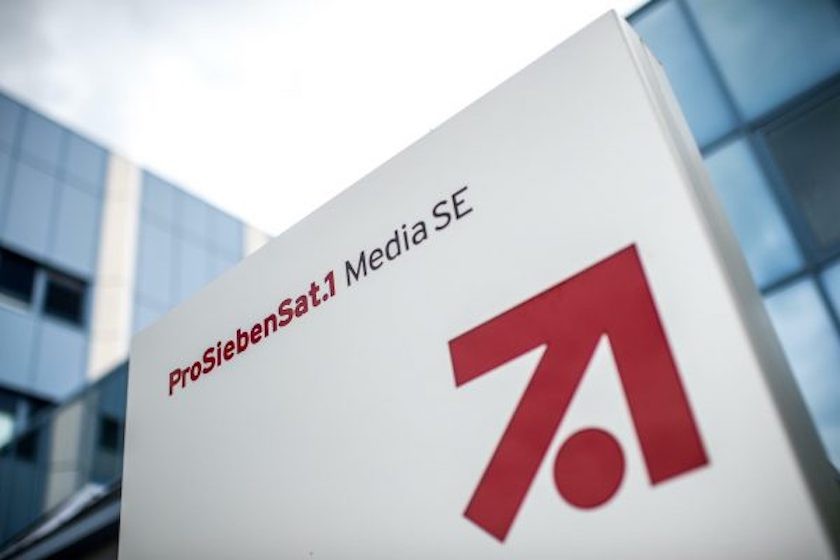 Each year VAN asks some of the leading ad tech CEOs – the people who have the inside track on pretty much everything that happens in the industry – to make their predictions for the coming year. This year we have Amir Ashkenazi, CEO of Adap.tv, Mike Shehan, CEO of SpotXchange, Tod Sacerdoti, CEO of BrightRoll, Dean Denhart CEO of BlackArrow, Mark Trefgarne, CEO of LiveRail, Pierre Chappaz, CEO of Ebuzzing and James Booth, CEO of Rockabox.
Each year VAN asks some of the leading ad tech CEOs – the people who have the inside track on pretty much everything that happens in the industry – to make their predictions for the coming year. This year we have Amir Ashkenazi, CEO of Adap.tv, Mike Shehan, CEO of SpotXchange, Tod Sacerdoti, CEO of BrightRoll, Dean Denhart CEO of BlackArrow, Mark Trefgarne, CEO of LiveRail, Pierre Chappaz, CEO of Ebuzzing and James Booth, CEO of Rockabox.
Amir Ashkenazi, CEO, Adap.tv
 Judging from what’s happened in 2013, I am extremely bullish on what is to come next year in digital advertising, particularly in video.
Judging from what’s happened in 2013, I am extremely bullish on what is to come next year in digital advertising, particularly in video.
This year, we saw advertisers and publishers transform their businesses, replacing cobbled-together systems and processes with automated, or programmatic, trading. We expect the same or greater growth trajectory for programmatic and video next year, with some estimates saying that nearly 75% of digital ad spend will be on programmatic advertising by 2015.
Also, the “technology tax”, or the amount of money advertisers and publishers pay to technology middlemen, will push even more media buyers and sellers to look at more robust, open platforms that power cross-screen, multi-format advertising.
Lastly, 2013 was really a watershed moment for revenue coming from mobile ads. As mobile continues to ingrain itself in our day-to-day lives, multi-screen advertising, and the ability to close the loop with audiences, will become ever more important.
Mike Shehan, CEO, SpotXchange
 SpotXchange has long envisioned a world where all of online advertising is transacted in an automated fashion and I believe 2014 will put us a step closer to that reality. The continued growth of programmatic will have a tremendous impact on the strategies and infrastructure of all players in the video advertising ecosystem, and next year I think we’ll continue to see agencies of all sizes moving over to DSPs and creating their own trading desks.
SpotXchange has long envisioned a world where all of online advertising is transacted in an automated fashion and I believe 2014 will put us a step closer to that reality. The continued growth of programmatic will have a tremendous impact on the strategies and infrastructure of all players in the video advertising ecosystem, and next year I think we’ll continue to see agencies of all sizes moving over to DSPs and creating their own trading desks.
This will give agencies the ability to tap into large exchanges and execute programmatic direct campaigns with more publishers, ultimately putting further downward pressure on ad networks. Programmatic direct will be a big theme next year and keep in mind not only will it drive greater efficiencies and open up access to more inventory, but I think we’ll see a long-term effect of deeper and more meaningful relationships between buyers and sellers.
Dean Denhart, CEO, BlackArrow
 Much as we predicted last year, TV still matters and continues to hold the lion’s share of the global ad spend. “Time-shifting” is steadily growing and we predict for 2014 that on-demand viewership of primetime content will surpass live viewership. The market will realize that the opportunity to monetize time-shifted/on-demand programming is a large one, and see on-demand as a must have advertising platform.
Much as we predicted last year, TV still matters and continues to hold the lion’s share of the global ad spend. “Time-shifting” is steadily growing and we predict for 2014 that on-demand viewership of primetime content will surpass live viewership. The market will realize that the opportunity to monetize time-shifted/on-demand programming is a large one, and see on-demand as a must have advertising platform.
We also see 2014 as the Year of Convergence with a major MSO deploying a unified ad platform that can dynamically insert targeted ads in live/linear as well as on on-demand TV across both traditional (QAM) and new (IP) platforms, marrying the old and the new, and paving the way for TV convergence at last!
Lastly, we see significant global industry consolidation across cable, telco and satellite becoming the major news of 2014, with these mergers and acquisitions consolidating to achieve even greater scale as the threats of OTT continue to grow.
Mark Trefgarne, CEO and Co-Founder, LiveRail
 In 2014 we will see at least 25% of video ad budgets executed programmatically as advertisers increasingly seek the benefits of targeting, measurability, and reduced operational burden that can be achieved by programmatic technology. In response, broadcasters will turn to private exchange solutions that give them the ability to open inventory to buyers on a programmatic basis while maintaining the controls they need as premium publishers.
In 2014 we will see at least 25% of video ad budgets executed programmatically as advertisers increasingly seek the benefits of targeting, measurability, and reduced operational burden that can be achieved by programmatic technology. In response, broadcasters will turn to private exchange solutions that give them the ability to open inventory to buyers on a programmatic basis while maintaining the controls they need as premium publishers.
In 2014 we’ll see as much as 40% of online video views coming through mobile devices. Additionally, cable providers will invest heavily in VOD platforms. We may also see a major new platform released from a consumer Internet company like Apple or Google, that brings together hardware, software, and a large on demand content library that gives consumers a new avenue through which to consume OTT video.
Tod Sacerdoti, CEO, BrightRoll
 In 2013, we saw programmatic buying gain considerable traction across the digital ad ecosystem. In 2014, we’ll see more brand advertisers turning to sophisticated programmatic buying platforms to help them plan, execute and optimize their video ad campaigns, while advanced measurement and reporting tools will be made available to help advertisers maximize the value of their digital investments. We’ll also see traditional TV advertisers adopt programmatic buying to extend ad campaigns across digital screens – bringing us closer to closing the gap between the digital and TV worlds.
In 2013, we saw programmatic buying gain considerable traction across the digital ad ecosystem. In 2014, we’ll see more brand advertisers turning to sophisticated programmatic buying platforms to help them plan, execute and optimize their video ad campaigns, while advanced measurement and reporting tools will be made available to help advertisers maximize the value of their digital investments. We’ll also see traditional TV advertisers adopt programmatic buying to extend ad campaigns across digital screens – bringing us closer to closing the gap between the digital and TV worlds.
Pierre Chappaz, CEO, Ebuzzing
 Next year brands and distributers will focus on engagement. Rather than forcing users to watch a video they should aim to connect with the audience. Opt-in formats will benefit the most from this trend and dynamic, immersive brand experiences should be on advertisers’ radar next year.
Next year brands and distributers will focus on engagement. Rather than forcing users to watch a video they should aim to connect with the audience. Opt-in formats will benefit the most from this trend and dynamic, immersive brand experiences should be on advertisers’ radar next year.
It has been shocking to learn 50% of ads aren’t even viewable and in 2014 advertisers should be offered ad formats which are 100% viewable 100% of the time. Following Google’s announcement on viewability last week, I predict more providers will begin offering visible ad formats.
Finally the range of devices on offer means brands should begin creating bespoke content for each device. A 30 second long TV ad might be okay on PC but it misses out on the interactivity online video and mobile devices can offer. Just as each screen is different each ad placed on it should be developed differently, whether it’s the targeting, layers of engagement or simply length.
James Booth, CEO and Co-Founder, Rockabox
 Video has been central to the digital marketing agenda for over 10 years yet the desire to make it work for all is stronger today than ever. In this capacity I believe that 2014 will be the year that sees video make better sense of real-time bidding (RTB) environments, allowing trading desks to exploit the format dynamically. Furthermore, the distribution of video assets will be subject to new methodologies that serve to improve the effectiveness of campaigns by focusing on premium publisher opportunities rather than the existing cost-per-view approach that typically results in low quality, poor inventory and non-human traffic.
Video has been central to the digital marketing agenda for over 10 years yet the desire to make it work for all is stronger today than ever. In this capacity I believe that 2014 will be the year that sees video make better sense of real-time bidding (RTB) environments, allowing trading desks to exploit the format dynamically. Furthermore, the distribution of video assets will be subject to new methodologies that serve to improve the effectiveness of campaigns by focusing on premium publisher opportunities rather than the existing cost-per-view approach that typically results in low quality, poor inventory and non-human traffic.




